
Acta Crystallographica Section F-Structural Biology Communications
Scope & Guideline
Bridging Science and Discovery in Structural Biology
Introduction
Aims and Scopes
- Structural Biology and Crystallography:
The journal focuses on the determination and analysis of the three-dimensional structures of biological macromolecules, primarily proteins and nucleic acids, using techniques such as X-ray crystallography and cryo-electron microscopy. - Functional Characterization of Biomolecules:
In addition to structural studies, the journal emphasizes the functional characterization of biomolecules, exploring how their structures relate to biological functions, interactions, and mechanisms at the molecular level. - Innovative Methodologies in Structural Biology:
The journal publishes research that introduces novel methodologies in structural biology, including advancements in crystallization techniques, data collection methods, and computational approaches for structure determination. - Interdisciplinary Collaborations:
Acta Crystallographica Section F encourages interdisciplinary research that combines structural biology with other fields such as biochemistry, molecular biology, and bioinformatics to provide comprehensive insights into biological systems. - Educational Contributions:
The journal also highlights educational initiatives aimed at enhancing the teaching and understanding of structural biology, including resources for training and outreach to the scientific community.
Trending and Emerging
- Cryo-Electron Microscopy (Cryo-EM):
There is a growing emphasis on studies utilizing cryo-electron microscopy, which offers high-resolution structural insights into large macromolecular complexes, reflecting the method's increasing importance in structural biology. - Integration of Structural Data with Functional Studies:
Recent publications show a trend towards integrating structural data with functional studies, highlighting the importance of understanding how structure influences function in biological systems. - Collaborative International Research:
The journal has increasingly featured articles emphasizing the importance of international collaborations in advancing structural biology research, indicating a shift towards global scientific partnerships. - Application of Machine Learning and Computational Approaches:
Emerging trends include the application of machine learning and computational methods to analyze structural data, suggesting a growing interest in using technology to enhance structural biology research. - Educational Outreach and Resources:
There is an increasing focus on educational initiatives and resources aimed at promoting structural biology research and training, reflecting a commitment to fostering the next generation of scientists in the field.
Declining or Waning
- Traditional Structural Biology:
There has been a noticeable decline in publications focused solely on traditional structural biology approaches without integrating functional analysis or novel methodologies. This may indicate a shift towards more holistic studies that combine structural insights with functional implications. - Basic Crystallization Studies:
Research that purely addresses crystallization techniques without further analysis of the resulting structures has become less frequent, suggesting that there is a preference for studies that provide additional context or applications of crystallization results. - Single-Structure Publications:
The journal has seen fewer articles dedicated to the presentation of single structures without broader implications or comparisons to other structures, indicating a trend towards more comprehensive studies that contextualize findings within larger biological frameworks.
Similar Journals

STRUCTURAL CHEMISTRY
Advancing the Frontiers of Chemical StructureSTRUCTURAL CHEMISTRY is a premier journal published by SPRINGER/PLENUM PUBLISHERS, dedicated to advancing the study and understanding of the structural aspects of chemistry. With an ISSN of 1040-0400 and an E-ISSN of 1572-9001, this journal serves as a critical resource for researchers and professionals engaged in the fields of Condensed Matter Physics and Physical and Theoretical Chemistry. Since its inception in 1990, it has become an essential platform for disseminating high-quality research, featuring articles that explore innovative methodologies, experimental techniques, and theoretical frameworks. As evidenced by its Scopus rankings, including #192 in Condensed Matter Physics and #101 in Physical and Theoretical Chemistry, the journal occupies a respected position within the academic community, promoting interdisciplinary collaboration and insight. While it operates on a traditional subscription model, the journal continues to broaden its reach to foster knowledge exchange among scholars worldwide. With a commitment to excellence and relevance, STRUCTURAL CHEMISTRY remains a vital contributor to the scientific dialogue surrounding chemical structure and its myriad implications across various scientific disciplines.
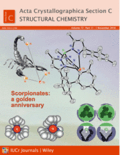
ACTA CRYSTALLOGRAPHICA SECTION C-STRUCTURAL CHEMISTRY
Advancing Knowledge in Crystalline MaterialsACTA CRYSTALLOGRAPHICA SECTION C-STRUCTURAL CHEMISTRY is a respected journal in the fields of condensed matter physics, inorganic chemistry, and materials chemistry, published by the International Union of Crystallography. With an extensive history dating back to its inception in the late 1980s, this journal serves as a significant platform for researchers to disseminate high-quality research on structural chemistry, focusing on the synthesis and characterization of crystalline materials. Despite currently holding a Q4 ranking across multiple academic categories, it remains an essential resource for those engaged in these scientific disciplines, facilitating dialogue and collaboration among experts. The journal's commitment to publishing innovative studies ensures that it continues to contribute to the advancement of knowledge in its field. Although it does not offer Open Access, the journal is dedicated to maintaining rigorous peer-review standards, making it a reliable source for scholars and practitioners alike. Located in the United States, ACTA CRYSTALLOGRAPHICA SECTION C is a pivotal part of the global crystallography community.

PROTEINS-STRUCTURE FUNCTION AND BIOINFORMATICS
Exploring the Interplay of Structure and FunctionPROTEINS - STRUCTURE FUNCTION AND BIOINFORMATICS, published by WILEY, is a leading journal in the fields of biochemistry, molecular biology, and structural biology, recognized for its significant contribution to protein research since its inception in 1986. With its impressive rankings in the Q1 category for Biochemistry and Q2 for both Molecular Biology and Structural Biology in 2023, the journal serves as an essential resource for researchers and professionals seeking to explore the intricate relationships between protein structures and their functions. The journal, based in the United States, operates without an Open Access model, ensuring a curated selection of high-quality peer-reviewed articles that drive innovation and collaboration in the scientific community. Engaging with the robust content of PROTEINS not only bolsters academic scholarship but also opens avenues for groundbreaking discoveries that are pivotal in the advancing field of bioinformatics.

Algorithms for Molecular Biology
Exploring the intersection of computation and molecular science.Algorithms for Molecular Biology, published by BMC, is a premier Open Access journal dedicated to advancing the field of molecular biology through innovative computational methods. Since its inception in 2006, the journal has provided a vital platform for researchers to share their findings and methodologies, covering a diverse range of topics at the intersection of applied mathematics, computational theory, and molecular biology. With a notable impact factor reflected in its Scopus ranks, including a Q2 classification in both applied mathematics and computational theory, as well as Q3 in molecular and structural biology, the journal plays an essential role in this rapidly evolving discipline. The wide accessibility of articles published under the Open Access model ensures that research findings reach a global audience, fostering collaboration and innovation amongst scientists and professionals alike. As we look towards converging years from 2006 to 2024, Algorithms for Molecular Biology continues to uphold the highest standards of scientific integrity and excellence, reinforcing its status as a key resource for those engaged in the profound complexities of molecular biology.

CRYSTALLOGRAPHY REPORTS
Advancing Knowledge in Crystallographic ResearchCRYSTALLOGRAPHY REPORTS (ISSN: 1063-7745, E-ISSN: 1562-689X), published by PLEIADES PUBLISHING INC, is a pivotal journal in the fields of chemistry, condensed matter physics, and materials science. Established in 1996 and continuing through to 2024, it serves as a vital resource for researchers and professionals seeking to disseminate and engage with contemporary advancements in crystallography. While currently not classified as open access, the journal's rigorous peer-review process ensures the publication of high-quality research, making it a respected entity within the academic community. With a categorization in the Q4 quartile for its respective fields and notable Scopus rankings, CRYSTALLOGRAPHY REPORTS is committed to fostering an understanding of crystallographic techniques and their application across scientific disciplines. This journal is essential for those looking to stay abreast of the latest findings and methodologies in crystallography, providing a platform for impactful discussions and collaborations.

Journal of Structural Biology-X
Exploring the Foundations of Life at the Molecular LevelThe Journal of Structural Biology-X, published by Elsevier, is a leading open-access journal dedicated to advancing the field of structural biology. Launched in 2019, it has quickly established itself as a vital resource for researchers, professionals, and students, boasting a prestigious Q1 ranking in Structural Biology for 2023 and achieving an impressive Scopus rank of #19 out of 49 in the biochemistry, genetics, and molecular biology category. With an E-ISSN of 2590-1524, this journal emphasizes accessibility and collaboration by providing open access to its comprehensive collection of research articles, reviews, and cutting-edge methodologies. The scope of the journal encompasses significant themes within structural biology, including protein structure, molecular interactions, and imaging techniques, facilitating interdisciplinary dialogue and innovation. Join the global community of scientists and contribute to the body of knowledge that propels our understanding of molecular architecture through the Journal of Structural Biology-X.
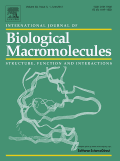
International Journal of Biological Macromolecules
Elevating Scientific Knowledge in Biological SciencesThe International Journal of Biological Macromolecules, published by Elsevier, is a premier journal in the field of biological sciences, distinguished for its rigorous peer-review process and commitment to advancing research in biochemistry, molecular biology, and structural biology. With a Q1 categorization in multiple disciplines, including biochemistry and molecular biology, and an impressive Scopus ranking positioning it among the top echelons of its field, this journal is essential for researchers and professionals dedicated to exploring the complex interactions and applications of macromolecules. The journal, which has been publishing significant findings since 1979, provides a vital platform for disseminating innovative research that addresses critical challenges in various sectors such as medicine, agriculture, and materials science. Though it does not currently offer open access options, its impact on the scientific community is reflected in its H-index and percentile rankings, placing it firmly within the top tiers of its classification. By fostering a deeper understanding of biological macromolecules, this journal continues to contribute significantly to scientific knowledge and technological advancement.
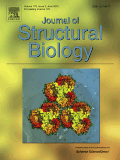
JOURNAL OF STRUCTURAL BIOLOGY
Advancing the Frontiers of Structural BiologyJOURNAL OF STRUCTURAL BIOLOGY, published by Academic Press Inc. Elsevier Science, is a prestigious peer-reviewed journal dedicated to advancing the field of structural biology. With an impressive Impact Factor and recognized as a Q1 journal in its category for 2023, it holds a significant position in the academic community, ranked 20th out of 49 in the Scopus Biochemistry, Genetics and Molecular Biology - Structural Biology category. The journal publishes groundbreaking research that contributes to our understanding of biological macromolecules and their complexes, span from 1990 and continuing through 2024. Researchers and professionals alike rely on this journal for high-quality articles that cover a wide array of techniques including X-ray crystallography, NMR spectroscopy, and cryo-electron microscopy. Although it does not operate under an Open Access model, the journal remains a vital resource for those in academia and industry searching for the latest findings and methodologies in structural biology.
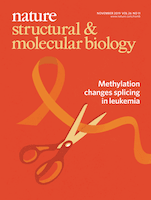
NATURE STRUCTURAL & MOLECULAR BIOLOGY
Elevating Research, Transforming UnderstandingNATURE STRUCTURAL & MOLECULAR BIOLOGY is a leading journal published by NATURE PORTFOLIO, dedicated to advancing the field of molecular and structural biology since its inception in 1998. With an impressive impact factor that places it in the Q1 quartile across both the Molecular Biology and Structural Biology categories, this journal is pivotal for researchers and professionals seeking to publish innovative and high-impact results. Its Scopus ranking further highlights its elite status, with a remarkable 98th percentile for Structural Biology and 95th for Molecular Biology. While the journal does not currently offer open access, it continues to foster a rich discourse among scientists by providing a platform for the dissemination of groundbreaking research. Located in the United Kingdom and operated from Berlin, the journal's commitment to excellence positions it as an indispensable resource for students, researchers, and practitioners in the realms of biochemistry, genetics, and molecular biology.
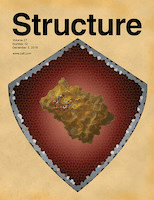
STRUCTURE
Unveiling the intricate dance of proteins and structures.STRUCTURE is a premier academic journal published by CELL PRESS, dedicated to advancing the field of structural biology and molecular biology since its inception in 1993. With an impressive reputation, it is recognized as a Q1 journal in both Molecular Biology and Structural Biology categories, reflecting its high impact within the academic community. The journal holds a significant position in Scopus rankings, placing 10th among 49 in Structural Biology and 100th among 410 in Molecular Biology, marking it as a key resource with a strong influence on ongoing research. Researchers and professionals alike will find STRUCTURE an invaluable platform for disseminating cutting-edge findings related to protein structure, dynamics, and interactions, fostering insights that can lead to groundbreaking applications in medicine and biotechnology. Although the journal follows a traditional subscription model, it continues to attract a diverse array of submissions, ensuring a vibrant exchange of knowledge in the ever-evolving landscape of structural and molecular biology. Access to its content can enhance the understanding of intricate biological mechanisms, making it essential reading for experts, students, and anyone passionate about the molecular underpinnings of life.